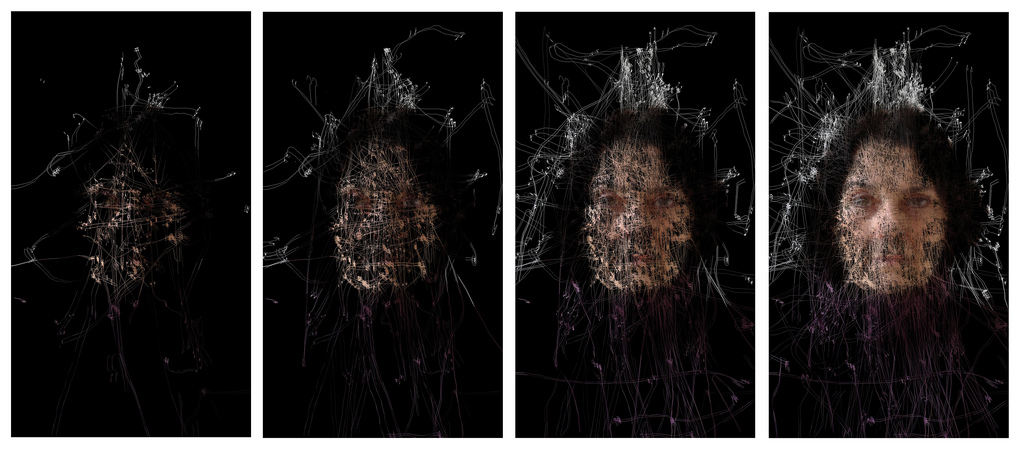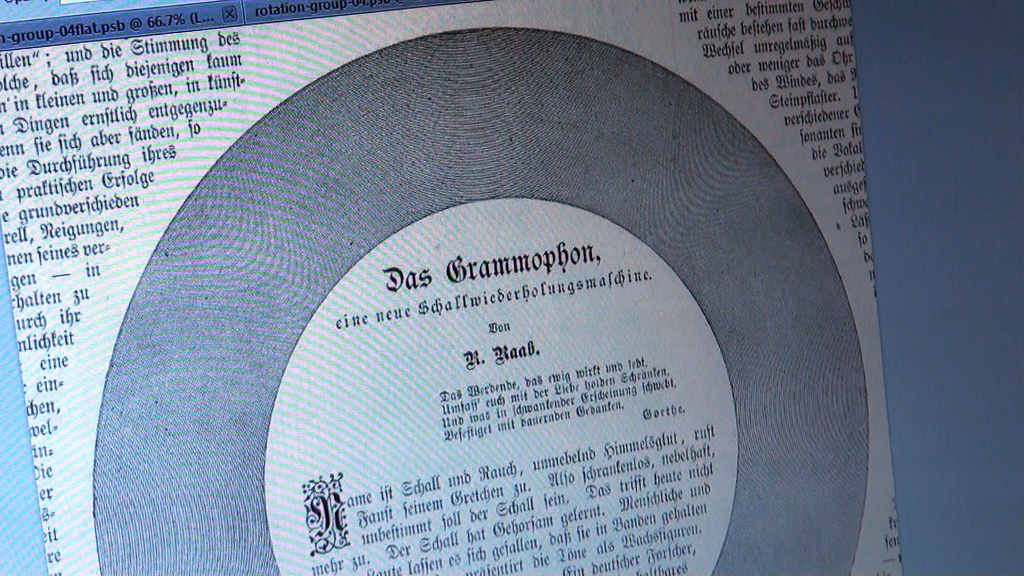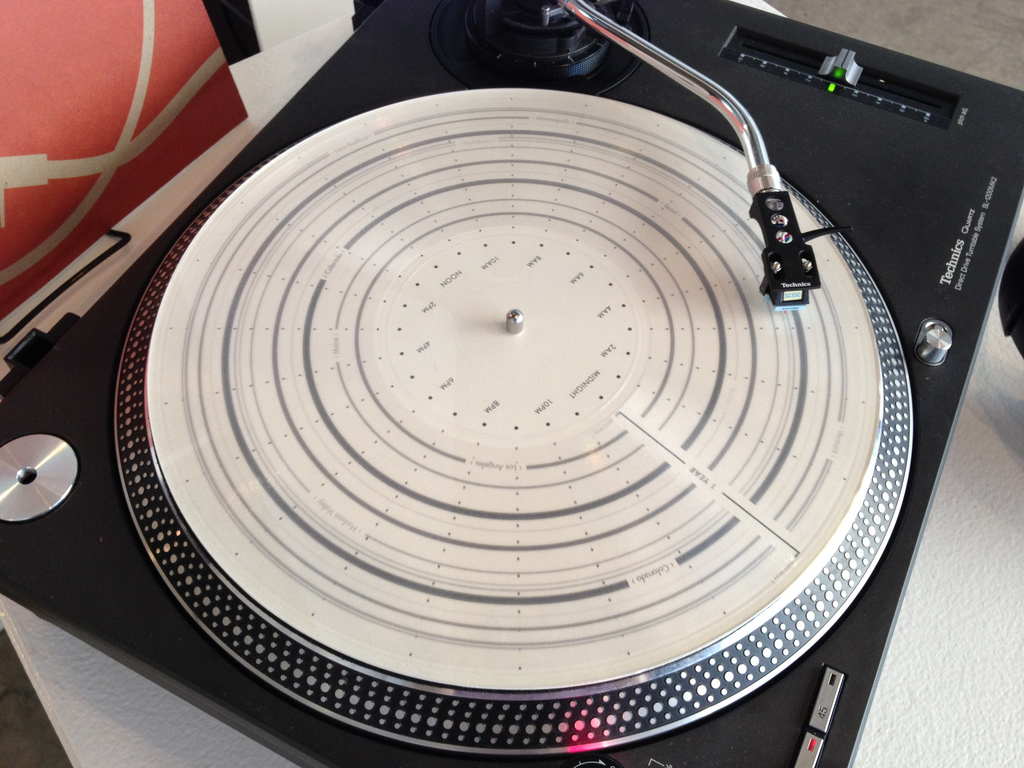Brucknerhaus
Thu 5. 9. 10:00 – 19:00
Fri 6.9. 10:00 – 17:30
Sat 7. 9. 10:00 – 17:00
Sun 8. – Mon 9. 9. 10:00 – 19:00

The Memory we always wanted or the Memory we never asked for? The TOTAL RECALL is the exhibition accompanying the theme symposium. It focuses on the cartography of the human brain, DNA as nature’s memory, and the history of mnemonic apparatuses and media, but it also deals with the dilemma of Information Society pinned between a rock and a hard place: the manic effort to archive everything and fear of digital memory’s omnipotence. Selected examples also show how media artists and internet activists as well as the so-called Big Bad Companies are coming to terms with this situation.
Digital Memory

Google has already been giving thought to how users can prepare their digital ego for the time after their death. What they’ve come up with is a service: Google Inactive Account Manager.
Anyone who isn’t content to leave digitization of books—that is, humankind’s literary heritage—up to Google Books can digitize his/her own. It’s easy when you do it with DIYBookScanner, which Daniel Reetz (US) built with a low-priced compact camera and freeware.
Commissioned by Intel, the Museum of Me depicts one’s personal Facebook network as an online portrait gallery, graphically represents a user’s social life on the internet including his/her digital footprint, and thus erects a monumental commemorative site to an individual netizen.

To protect his processor and thus a portion of his memory from hackers, snoops and censors, Hiroto Ikeuchi (JP) constructed Fantasy captured in plastic model, a desktop diorama in which toy soldiers stand guard.
Self-depiction, World representation

Careless dealings with one’s personal data and, in many cases, an almost obsessive urge to expose one’s private affairs in public social networks motivated artist Doris Graf (DE) to take action. For her Pikträts, she interviews internet users—including visitors to the Ars Electronica Festival. She impudently pries into precisely those data that social websites prefer to gather with soberly worded online forms, and then depicts the qualities and characteristics of her interlocutors in the form of pictograms. Framed and arranged in rows and columns, the Pikträts clearly reveal the extent to which human individuality on the internet—despite all promises of personality development—is reduced to a few facts for the purpose of economic utility.
The Table of Gazes by Mariano Sardón and Mariano Sigman (AR) deals with another form of portraiture. This project uses eye-tracking to document how people look at each other and recognize one another. The Table of Gazes thus renders a new type of portrait art that unites subjective and objective points of view.
An individual’s essential traits are also of primary interest to Werner Pfeffer (AT) in his project entitled House of Creativity, an online collection of mental strategies. Exhibition visitors are invited to relate their personal assessments of what life is all about.
The World Map Archive is the world’s only collection of first attempts to draw a map of the world. Benjamin Pollach (DE) has been collecting such efforts for many years now—for instance, in Peru, Bangladesh, Mexico and California. Now, visitors to the Ars Electronica Festival are invited to contribute their view of our planet.
An Arboreal Wonder and an Android
The Japanese city of Rikuzentakata has gone to great lengths to commemorate the Miracle Pine Tree, the only one of 70,000 such pines to survive the tsunami caused by the 2011 earthquake. The tree, which died shortly afterwards, has since been restored in its original shape and size. The replica now stands in the place of its predecessor.

A sort of Japanese national treasure in his own right is Beicho Katsura III, the supreme master of Rakugo, the ancient Japanese art of recitation. The resemblance of the Beicho Android by robotics genius Hiroshi Ishiguro (JP) to the human on which it was modeled is nothing less than astounding, and is simultaneously a promising strategy for the preservation of this art form.
Camera Work
Oliver Bimber (AT) is likewise involved in a new method to produce likenesses: light-field photography. Using a light-field & lytro camera he developed himself, he captures the light distribution throughout an entire space to produce a data model that allows for a completely new form of registering and reconstructing images. A sharp contrast to this is provided by remarkable historical artifacts from the collection of the Technical Museum in Vienna (AT). They show how people in the 19th century depicted the world three-dimensionally.
Scientist Reinhard Nestelbacher (AT) has come up with a truly futuristic idea for producing pictures. For The Cell Camera, he modifies human cells and cultivates them as a one-cell-thick layer. Chemicals used in cancer therapy sensitize these cells to light. Beneath a black-and-white negative illuminated by a laboratory lamp, the cells form a picture that corresponds to the negative.
Into Eternity by Michael Madsen (DK) is a documentary film about Onkalo, Finland, the world’s first storage depot for radioactive waste. It’s also about what sort of operating instructions we should leave our descendants—for instance, in 100,000 years.
Its cinematic counterpart is a documentary entitled Diverseeds by Markus Schmidt (AT) about maintaining the variety of seeds and plants in Asia and Europe.
The Good Old LP

An extraordinary find is the Oldest Record of History, which had only been preserved in a photograph. Solely on the basis of this image, Patrick Feaster (US) succeeded in reconstructing, as it were, this phonograph record and the spoken word recordings it contained!

No less remarkable is the Quotidian Record, an acoustic autobiography pressed in vinyl by Brian House (US). It contains an acoustic form of the tracking data from every location House spent time in over the course of a year. That time period passes in fast-forward: 1 revolution = 1 day, so the 365 days of the year take 11 minutes to play back.

The recipient of a Prix Honorary Mention, The Sound of the Earth by Yuri Suzuki (JP) likewise works in fast-forward mode: around the world in 30 minutes. Each country on this playable world map is represented by its own sounds ranging from folk music to hymns to pop songs to segments of radio broadcasts.
Homage to the Tape Recorder

The Toki Ori Ori Nasu – Falling Records installation by Ei Wada (JP) is an homage to the analog tape recorder and a pleasure to behold—old-fashioned audio technology placed on classic pedestals, from which the played-out tapes cascade down into a glass display case where they twist and fold into fascinating layers, pattern and interwoven forms.
Michelle Ngai and Keith Lam of Dimension+ (HK/TW) work with another medium that has long since disappeared from everyday use: the cassette. Device Playing – Cassette Recorder (II) scans the magnetic field between the magnetic heads of a cassette recorder and the reel of magnetic tape, translates it into sound (which changes along with the varying strength of the magnetic field) and transfers it to an iPod.

Yusuke Tominaka, Shigeki Shimizu, Yusuke Nakamura, Atsushi Msamori and Hiroya Tanaka of Hiroya Tanaka Laboratory (JP) also enable sound to assume spatial dimensions. Wave Form Media is an original process to turn the sound waves—of recorded music, for instance—into individualized objects that can be worn like pieces of jewelry, and make it possible to reconstruct the original tonal material.
The Total Brain
The aim of the Big Brain Project by Joaquin Fargas (AR) is the creation of a world brain. To achieve this, neuron cells are to be cultivated and activated in as many labs as possible—starting with the Ars Electronica Center and the Maimonides University in Buenos Aires(AR)). These cells will be interlinked online, with the internet assuming the role of synapses.


Real brain specimens preserved by Vienna’s Natural History Museum (AT) can be viewed in the Brain Gallery, where they’re juxtaposed to digital models generated by state-of-the-art methods used at the Max Planck Institute for Human Cognitive and Brain Sciences in Leipzig (DE) and by Hans Ulrich Dodt (DE) at the Vienna University of Technology (AT).
Beautiful Minds: The Psychology of the Savant is the title of a made-for-TV documentary by Petra Höfera (DE) and Freddie Röckenhaus (DE) about people with Savant Syndrome, a condition in which a person with serious mental disabilities, including autistic disorder, demonstrates profound and prodigious capacities or abilities far in excess of what would be considered normal.
The Memory of Nature
Human DNA traces found in public places are the raw material Heather Dewey-Hagborg (US) used to create the portrait sculptures in her Stranger Visions series. Her aim is to point out DNA’s memory function as well as to call attention to the danger of a culture of genetic surveillance.
Suspect Inversion Center by Prix Ars Electronica prizewinner Paul Vanouse (US) is an open lab in which the artist uses his own DNA to produce copies of the historic DNA images from O. J. Simpson’s 1995 murder trial.
The bodymetries installation by Theresa Schubert (DE), Moritz Dreßler (DE) and Michael Markert (DE) invites those who behold it to interact with a computer simulation that assigns configurations of human moles to the protoplasmic tissue of an acellular slime mold (Physarum polycephalum) and thus applies an alternative method of decentralized cell organization to the human body.
Never Forget –Culture of Commemoration, Politics of Memory
Yad Vashem in Jerusalem (IL) is the most important memorial site and research facility dedicated to the Nazi’s genocide of the Jews. Its prizewinning online presence is a reference project for the use of the internet as a medium of commemoration and
remembrance.
In the TOTAL RECALL Exhibition, the Yad Vashem website with its online archive of names and images of many of the millions of victims of the Holocaust is also the point of departure for confrontations with the memorial sites at Hartheim and Mauthausen. Festivalgoers will have the opportunity to visit these two places located near Linz.
Schloss Hartheim in Alkoven is a Renaissance palace that served from 1940 to 1944 as a Nazi euthanasia facility. Here, approximately 30,000 human beings—physically and mentally handicapped persons, the mentally ill, concentration camp prisoners (most from Mauthausen and its subsidiaries) and slave laborers—were systematically murdered. Today, Hartheim is an educational and memorial site. The Mauthausen concentration camp 20 kilometers east of Linz was the largest German concentration camp in Austria during the time of National Socialism.
A Class of Its Own

When it comes to visually mediating encounters with art and art history, Ikono.TV (DE) is in a class by itself. Its unique aesthetic and technical quality and the absence of know-it-all voice-over accompaniment make Germany’s first art-only channel the ideal setting in which to consider works of art, festivals and individual artists—for instance, Alexander Schellow (DE) and his work Drawing. His animated renderings take shape in a rigorously structured procedure as point-by-point drawings, which is what enables the artist to access his visual memory.
Brucknerhaus
Do 5. 9. 10:00 – 19:00
Fr 6. – Sa 7. 9. 10:00 – 17:30
So 8. – Mo 9. 9. 10:00 – 19:00

